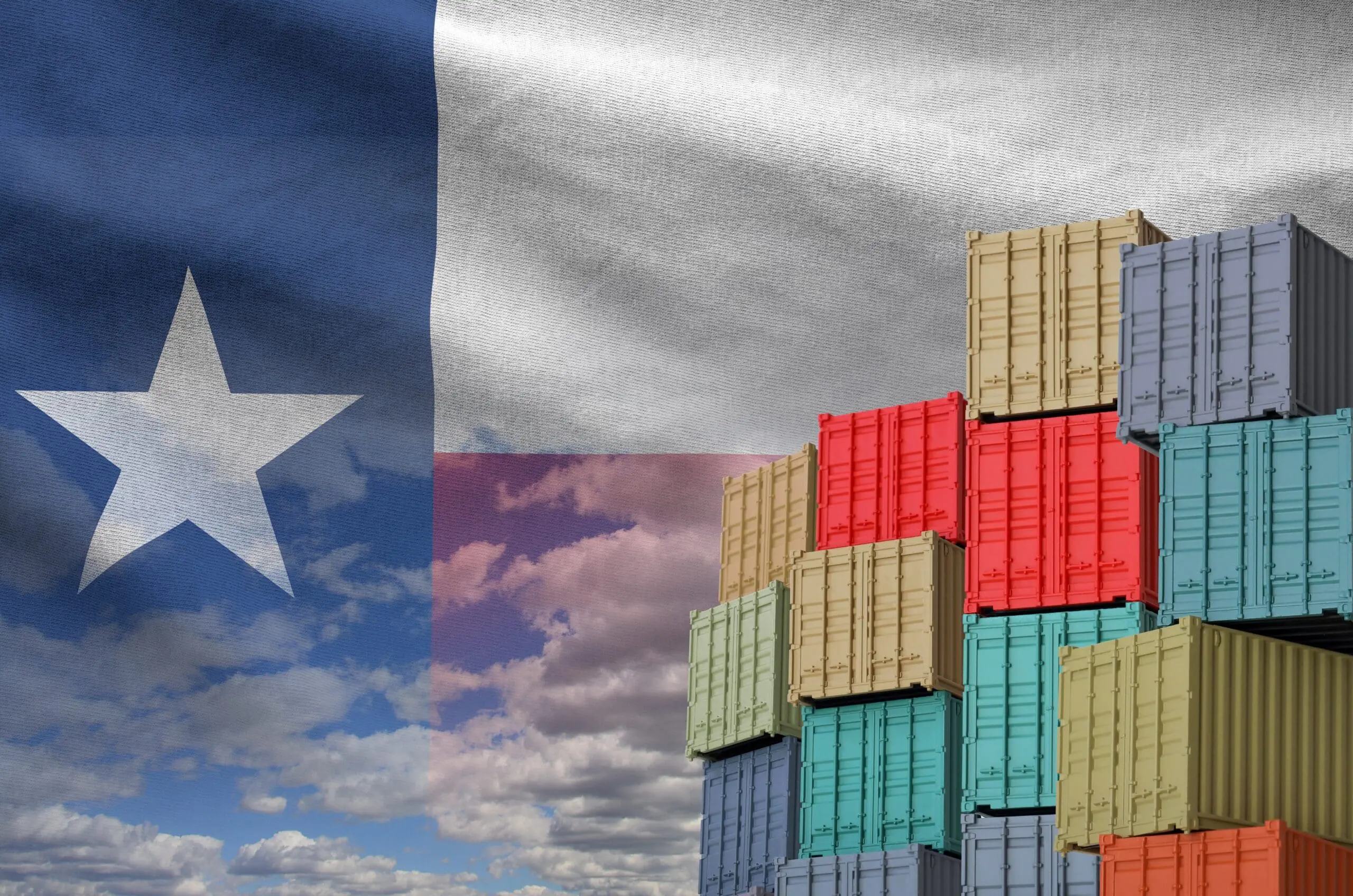2025 Trends Impacting Supply Chains and Warehousing in Texas
As a vital hub for supply chain and logistics operations, Texas plays a crucial role in both the regional and national economies. The state’s strategic location, expansive infrastructure, and business-friendly environment make it a hotspot for warehousing, shipping, and handling activities.
And that isn’t changing any time soon: between 2021-23, the Lone Star State was #1 nationwide in investment projects with a logistics function, with 1,241 facilities. The Port of Houston, which supports economic activity representing 20% of the state’s GDP ($439 billion statewide and $906 billion nationwide), also just logged 32% growth YoY in container imports. Needless to say, the future of logistics in Texas is a bright one.
With our strong presence in the Southern Region (especially in Texas), WSI leverages these advantages to offer exceptional logistics solutions and warehousing services. In this blog, we explore the key trends impacting Texas supply chains and warehousing in 2024.
Major Trends in Texas Supply Chains
E-Commerce Boom
The rapid rise of online shopping has significantly impacted Texas supply chains. With consumers increasingly turning to e-commerce even post-pandemic, there is a growing demand for ecommerce fulfillment centers and efficient shipping solutions in Texas. Warehouses in Texas are expanding their capacity to meet this surge and ensure timely delivery and improved customer satisfaction.
Tech Advancements
The adoption of advanced technologies such as Artificial Intelligence (AI), the Internet of Things (IoT), and automation is transforming fulfillment logistics operations. These innovations enhance efficiency and accuracy in warehouse operations, reducing errors and streamlining processes.
Texas fulfillment warehousing facilities are increasingly integrating these technologies to stay competitive and meet the demands of modern supply chains. For instance, AI-driven systems can predict demand patterns, optimizing inventory management and reducing waste.
Growing Warehousing Infrastructure
Texas is witnessing a significant expansion of its warehousing infrastructure, as warehouses in Texas have added millions of square feet of space over the past decade. The state’s central location and robust transportation networks make it ideal for large-scale warehouse developments, which service a huge variety of industries.
As businesses look to enhance their supply chain capabilities, more warehouses in Texas are being built or upgraded to handle increasing goods volume. This expansion not only supports local businesses but also attracts global companies seeking efficient logistics solutions. In recent years, Texas fulfillment warehousing and logistics are becoming growth powerhouses for the Lone Star State, representing substantial investments.
Focus on Sustainability
In recent years, sustainability has become a key focus in supply chain management. Companies are implementing eco-friendly logistics practices to reduce their carbon footprint and meet regulatory requirements.
In Texas, sustainability challenges are being addressed from the ground up. Despite the significant uptick in warehousing construction statewide, minimizing the carbon impact of that construction has become notably more popular in recent years. The renewed focus on sustainability also includes adopting green practices such as using energy-efficient lighting, electric vehicles, and recycling programs throughout daily operations in both warehousing and transportation.
By prioritizing sustainability, businesses not only contribute to environmental protection but also appeal to environmentally conscious consumers and stakeholders.
Supply Chain Resilience
The COVID-19 pandemic highlighted the importance of building resilient supply chains. Businesses are now focusing on diversifying their suppliers and enhancing local sourcing to mitigate global disruptions.
Across the state of Texas, supply chain resilience strategies include developing robust contingency plans, investing in technology to monitor supply chain risks, and fostering strong relationships with local suppliers. These measures ensure continuity and reliability in supply chain operations, even in times of crisis.
Workforce Challenges
Addressing labor shortages in logistics is another critical industry trend. The demand for skilled labor in warehouses and distribution centers has skyrocketed in recent years, and companies are now more heavily investing in training and workforce management to attract and retain talent.
In Texas, businesses are implementing strategic changes such as offering competitive wages, creating more flexible work schedules, and offering career development opportunities to build a capable and motivated workforce. By focusing on workforce challenges, companies can ensure smooth operations and maintain high service standards for years to come.
Texas Supply Chain: Leveraging Trends for Superior Solutions with WSI
These trends are shaping the future of supply chains and warehousing in Texas. By embracing technology, expanding infrastructure, prioritizing sustainability, and focusing on resilience and workforce development, WSI ensures that our clients receive efficient and reliable supply chain services.
The dynamic landscape of Texas supply chains offers numerous opportunities for businesses to optimize their logistics operations. To stay ahead of the curve, partner with WSI for customized supply chain solutions tailored to your specific needs. Contact us today to learn how we can help you navigate the evolving trends in Texas supply chains and warehousing.

About the Author

WSI Team
WSI is one of the largest privately held 3rd party logistics companies in the U.S. and spans a nationwide distribution network with global logistics reach.



